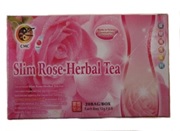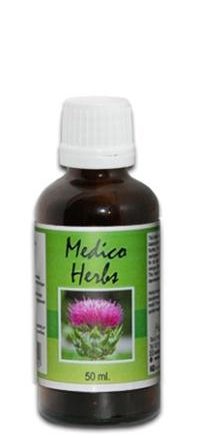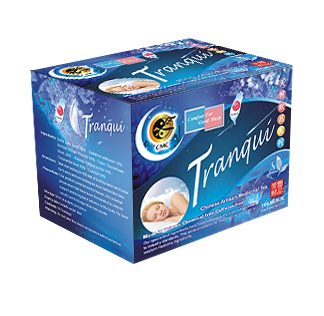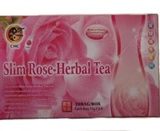Description
Slim Rose Herbal Tea
SLIMROSE has been found to be beneficial in increasing one’s metabolism, thus being of assistance in a weight loss program. Dieting and poor eating habits can contribute to nutritional imbalance and anemia and SLIMROSE, by helping to normalize the systemic circulation, assists one in achieving optimum health. Not only is SLIM ROSE beneficial in helping towards weight reduction, but it has been found to assist in the prevention of obesity and obesity related illnesses.
Ingredients:
Rugosa Rose
In the 1st century CE, Pliny the Elder recorded thirty-two different medicinal uses of the rose. Roses were grown in medieval gardens more for medicine and food than for beauty. Ironically, the Cherokee rose is native to China, but now grows throughout much of North America and is the state flower of Georgia. It was used in China to treat diarrhea. In the 19th century, it was proven that roses contain essential oils. Rose oil is distilled from the petals and used in aromatherapy. With the discovery of vitamin C in the 1930s, and subsequent claims by Linus Pauling that massive doses of the nutrient could cure the common cold, rosehips have been of much interest because of their high content of this nutrient.
Unlike Western medicine, all indigenous cultures believe that there is no separation between the physical and the mental or spiritual being, and both must be assessed before healing occurs. The same belief has long been held true regarding the rose and is seen in this saying, “Roses are good for the skin and the soul”.
The botanical name of the Wild Rose is reflected in its use by the Romans. R. canina species was used for rabid dog bites. Roses continued as official medicine until well into the 1930s (British Pharmacopoeia) when the tincture of the Apothocary’s Rose was prescribed for sore throats. Roses were also widely used as mild astringents and to flavour other medicines.
There were dozens of varieties of roses in North America. The Native Americans learned how to use whatever grew in their region, as a medicine and, in cases of emergency, as a food. The leaves, petals, hips, and roots were widely used for a variety of conditions, including colds, fevers, diarrhea, influenza, and stomach troubles. The Omahas steeped the hips or roots to make a wash to treat eye inflammations. In the Great Lakes region, the Chippewas made a tea from the wild rose and used the berries for food and for diseases of the eye. They used the inner bark of the roots to treat cataracts.
The Pawnees collected the insect galls from the lower parts of the stems, and charred and crushed them for use in dressings for burns. The insect or disease-produced galls were found in the archaeological remains of the Hill Site, near present-day Guide Rock, Nebraska, which was occupied by the Pawnees in the early 1800s.
The Flathead and Cheyenne tribes treated snow blindness with an eyewash made by boiling the petals, stem bark, or root bark. The Cheyenne also boiled the inner bark to make a tea valued for treating diarrhea and stomach trouble.
Many other tribes used all parts of the plant for various remedies. The Crows boiled the crushed roots and used them in hot compresses to reduce swellings. They also sniffed vapor to stop bleeding’s from the nose or mouth.
The Arapahos used the seeds to produce a drawing effect for muscular pain.
Hawthorn Fruit (shan zha):
Hawthorn Fruit is an herb that is actually a genus of the rose family. It can be found in North America, Europe, and East Asia. There are so many – more than a hundred, in fact – species of the Hawthorn Fruit, and they can be used for a variety of medical conditions
If closely related plants are used by cultures on opposite sides of the globe, a scientific basis for the traditional use is likely. Such is the case with hawthorns, which have been used in European, Chinese, and American traditions alike to treat heart ailments. In traditional Asian medicine as well as European herbal traditions, hawthorn has been widely used in longterm prescriptions for hypertension related to cardiac weakness, arteriosclerosis, and angina pectoris.
Hawthorn is notably absent from medical works and herbals of early-nineteenth-century America and Europe. It came to the attention of the medical profession in the 1890s by means of a single reference in a medical journal. By the early twentieth century, it was a mainstay of heart disease treatment. Still widely used in Europe and Asia, it is less frequently recommended in America.
Fructus Mume:
Medicinal use in TCM: In traditional Chinese medicine, the smoked fruits, called wumei, is used for medicinal purposes.
Effect:
Chronic diarrhea and dysentery
It is a common used herb for chronic diarrhea and dysentery, because it enters large intestine meridian and astringes intestines to check diarrhea and dysentery. It could be decocted singly or combined with other intestines-astringing herbs to enhance the action of checking diarrhea or dysentery. This herb is sour and astringent in nature without astringing pathogen. For diarrhea and dysentery of damp-heat type, bloody purulent stool, it is combined with heat-clearing and damp-drying herbs.
Taraxacum:
Although generally regarded as a weed, dandelions have many uses, both culinary and medicinal.
Taraxacum officinale has diuretic and laxative properties. It has been used as a tonic, to treat rheumatic problems, and as a blood purifier. Young leaves and inflorescences are used as ingredients in salads and stir-fries.
Blanched hearts (obtained by earthing up or tying the leaves together) are also eaten. The flower heads are used to make dandelion wine, while the bitter root can be dried to make a substitute for coffee, a practice that was common during the rationing of the Second World War.
Poria Cocos:
Poria cocos may be called Poria, Tuckahoe, Indian bread or Fu-Ling in Chinese, is a sweet, bland and neutral herb. This medicinal fungus has been widely used and highly respected in Asia. In the wild, Poria cocos grows much like the European truffle, only it grows around the roots of certain pine trees instead of oaks. In traditional Chinese medicine, it is claimed to soothe the heart, disperse moisture and stagnation, strengthen vital energy, and assuage agitation; treat abdominal distension, edema, difficult urination, diabetes and diarrhea; enhance, protect, and restore liver function; modulate the immune system, balance blood sugar, and boost fat metabolism; have a whitening effect of skin, and reduce the appearance of pores and blackheads.
Rhizoma Imperatae:
The herb is sweet in flavor, cold in nature, and acts on the heart, lung, stomach and urinary bladder channels. Being sweet and cold for clearing heat and moistening dryness, and acting on blood in the heart channel, the herb can clear heat from blood to stop bleeding; acting on Qi in the lung and stomach, the herb can clear heat from the lung and stomach to promote the generation of the body fluid and moisten dryness. As a sweet and tasteless herb, it can induce diuresis to treat stranguria. Therefore, the herb is indicated for bleeding due to blood-heat, dryness-heat in the lung and stomach, strangury due to heat, and difficulty and pain in urination.
Effects:
Clearing heat from blood to stop bleeding, inducing diuresis and promoting the generation of the body fluid.
Licorice:
Tonifies pi (spleen), enhances qi, clears heat, rids of toxins, expels phlegm and stops cough, stops pain, synergizes other herbs. Being used in spleen and stomach weakness, tired and lack of strength, palpitation and short of breath, cough with abundance of phlegm, stomach and solar plexus pain.
- adrenocortical hormone function: As early as 1946 gan cao extract showed the characteristics of mineralcorticoid. Glycyrrhiza is metabolically converted to glycyrrhetic acid (GA). GA, when incubated in-vitro with adrenal gland cells increases DHEA production.
- effects on digestivesystem: (a).antiulcer (b).anti convulsion. (c). promotes secretion of insulin. (d). protects liver from toxin.
- anti inflammation
- anti allergy
- anti cancer: Saponins stimulate the immune system and inhibit Epstein-Barr virus expression and possess in-vitro (in the test tube) anti-cancer activities. Epstein_Barr virus is associated in certain cancer development. Glycyrrhiza also contains quercetin that has anticancer effects. Glycyrrhiza lowers serum testosterone levels and correspondingly increases estrogen levels by inducing two enzymes called 17-ß-hydroxysteroid dehydrogenase and aromatase thus inhibit prostate cancer cells.
- antivirus and bacteria: a. anti HIV, anti HBV b. anti amoeba and bacteria
- effect on blood vessels: a. lower blood lipids. Both saponins and licoflavones are known to bind to cholesterol and bile acids and have surfactant properties.
- Licorice is beneficial in chronic viral hepatitis
- Licorice was effective in inhibiting Pseudomona Aeruginosa where antibiotic failed.
Astragalus
Effect:
- l large dosage can lower blood pressure, vaso-dilation
- l small dosage can increase blood pressure
- l prolonging diuretic effect
- l lessening proteinuria
- l improving endurance
- l protecting liver function
- l regulate blood sugar
Pericarpium Citri Reticulatae:
Properties: The herb is pungent and bitter in flavour, warm in nature, acting on the spleen and lung channels. Being pungent for promoting circulation of Qi, bitter and warm for eliminating dampness, and aromatic for enlivening the spleen, the herb has mild effects of eliminating Qi stagnation in the spleen and stomach and phlegm-dampness in the spleen and lung. It is often used to treat Qi stagnation, distention and fullness in the spleen and stomach, retention and stagnation of dampness in the middle Jiao, cough and asthma due to excessive phlegm in the lung channel, and other syndromes.
Is often used combination with aucklandia root, amomum fruit, nutgrass flatsedge rhizome and other herbs for promoting circulation of Qi and normalizing function of the stomach, to treat gastro-abdominal distention, anorexia, vomiting and diarrhea caused by Qi stagnation in the spleen and stomach; with hawthorn fruit, medicated leaven, unripen bitter orange and other herbs for eliminating stagnated food, to treat dyspepsia, Qi stagnation, distention, acid regurgitation and indigestion; and with dangshen, white atractylodes rhizome and other herbs for strengthening the spleen and supplementing Qi, to treat abdominal distention, anorexia and loose stool due to spleen deficiency.
Effects: Promoting circulation of Qi, strengthening the spleen, eliminating dampness and relieving phlegm.
Hibiscus Sabdariffa:
It is also referred to as rosella (another common name for the hibiscus flower), jamaica in Latin America, karkady in the Middle East, bissap in West Africa, red sorrel in the Caribbean, and other names in other regions. Hibiscus has a tart, cranberry-like flavor, and sugar is often added to sweeten the beverage. The Hibiscus contains vitamin C and minerals and is used traditionally as a mild medicine.
Hibiscus contains 15-30% organic acids, including citric acid, maleic acid, and tartaric acid. It also contains acidic polysaccharides and flavonoid glycosides, such as cyanidin and delphinidin, that give it its characteristic deep red colour.
(source: wikipedia.org)
Medicinal Uses:
In India, Africa and Mexico, all above-ground parts of the roselle plant are valued in native medicine. Infusions of the leaves or calyces are regarded as diuretic, cholerectic, febrifugal and hypotensive, decreasing the viscosity of the blood and stimulating intestinal peristalsis. Pharmacognosists in Senegal recommend roselle extract for lowering blood pressure. In 1962, Sharaf confirmed the hypotensive activity of the calyces and found them antispasmodic, anthelmintic and antibacterial as well. In 1964, the aqueous extract was found effective against Ascaris gallinarum in poultry. Three years later, Sharaf and co-workers showed that both the aqueous extract and the coloring matter of the calyces are lethal to Mycobacterium tuberculosis. In experiments with domestic fowl, roselle extract decreased the rate of absorption of alcohol and so lessened its effect on the system. In Guatemala, roselle “ade” is a favorite remedy for the aftereffects of drunkenness.
In East Africa, the calyx infusion, called “Sudan tea”, is taken to relieve coughs. Roselle juice, with salt, pepper, asafetida and molasses, is taken as a remedy for biliousness.
(source: hort.purdue.edu)
Several studies have shown hibiscus tea to be beneficial in lowering blood pressure and maycontrol cholesterol. Hibiscus contains an enzyme inhibitor which blocks the production of amylase. Amylase is an enzyme that breaks down complex sugars and starches. Drinking a cup of hibiscus tea after meals will reduce the absorption of dietary carbohydrates and will assist in weight loss. Hibiscus is rich in vitamin C and makes a wonderful herbal remedy to fight off colds and infections by strengthening the immune system. Other benefits of Hibiscus include preventing bladder infections and constipation if taken regularly.
Cassia:
Cassia (legume) , a tree/shrub genus in the bean family (Fabaceae)
Modern pharmacological studies confirmed that complementary medicine Cassia of various eye diseases prevention and control, hypertension, high blood lipid (fat) and constipation, the effect significantly.
- The Liver eyesight is suitable for the role of various eye diseases, such as the liver caused by red eyes and red hot on the swelling and pain, the shame out more tears, blurred vision, and glaucoma, cataract, conjunctivitis, because of its role in the protection of optic nerve of modern television family, computer users could easily cause eye fatigue and other people have benefit.
- Suitable for its laxative effect in patients with constipation. Constipation results in the walls of the remaining intestinal absorption of toxins, chronic constipation, easy to make human aging, but also colon cancer, hemorrhoids and other diseases of the incentives, or cardiovascular disease causes sudden, one of the product so that defecation rather than thin , and no abdominal pain and discomfort of the disease, patients with chronic constipation, uniforms to no abuse.
- The lipid lowering blood pressure is suitable for hyperlipidemia, obesity, hypertension, coronary heart disease, atherosclerosis and other cardiovascular diseases.
Folium Nelumbinis
Effect:
- l Immunomodulatory potential
- l Acute and Chronic Restraint Stress
- l Chronic hepatotoxicity
- l Insulin secretion and blood glucose levels
- l Anti-obesity effect:
In the investigation of determination of the pharmacological mechanism of the anti-obesity effect of Nelumbo nucifera leaves extract (NNE) and the effect of NNE on digestive enzyme activity, lipid metabolism and theromogenesis and anti-obesity using high-fat diet-induced obesity in mice, indicated that NNE prevented the increase in body weight, parametrial adipose tissue weight and liver triacylglycerol levels in mice with obesity induced by a high-fat diet. UCP3 mRNA expression in skeletal muscle tended to be higher, when mice were administrated by NNE and were exercised. Therefore, NNE impaired digestion, inhibited absorption of lipids and carbohydrates, accelerated lipid metabolism and up-regulated energy expenditure. Consequently, NNE is beneficial for the suppression of obesity, according to “Anti-obesity effect of Nelumbo nucifera leaves extract in mice and rats” by Ono Y, Hattori E, Fukaya Y, Imai S, Ohizumi Y.(5)
l Cell proliferation and neuroblast differentiation
Leonurus cardiac:
Motherwort (Leonurus cardiaca) is a herbaceous perennial plant in the mint family, Lamiaceae. Other common names include Throw-wort, Lion’s Ear, and Lion’s Tail. Lion’s Tail also being a common name for Leonotis leonurus, and Lion’s Ear, a common name for Leonotis nepetifolia. Originally fromCentral Asia it is now found worldwide, spread largely due to its use as a herbal remedy.
Motherwort is primarily an herb of the heart. Several species have sedative effects, decreasing muscle spasms and temporarily lowering blood pressure. Chinese studies found that extracts decrease clotting and the level of fat in the blood and can slow heart palpatations and rapid heartbeat. Another of motherwort’s uses is to improve fertility and reduce anxiety associated with childbirth, postpartum depression, and menopause. If used in early labor it will ease labor pains and calms the nerves after childbirth. Take motherwort only once soon after giving birth as consistent use before the uterus has clamped down may cause bleeding to continue. Use one to two times a day in the weeks following birth for easing tension and supporting a woman through the feelings that come with new mothering. Do not use during pregnancy. Motherwort helps bring on a delayed or suppressed menstrual flow, especially when someone is anxious and tense. Chinese women often use it combined with dong quai as a menstrual regulator. Avoid using for menstrual cramps when bleeding is heavy. It strengthens and relaxes the uterine muscles and eases uterine cramping. It also reduces fevers, and is especially suggested for illnesses associated with nervousness or delirium. Motherwort was formerly used to treat rheumatism and lung problems, like bronchitis and asthma. Motherwort may help an overactive thyroid but does not depress normal thyroid function. Tincture the leaves and flowers as soon as you pick them. If you prefer to dry them, lay the leaves and stalks onto screens. Motherwort tea has a very bitter taste. Chinese medicine uses the seeds to aid in urination; cool the body system; treat excessive menstrual flow, absence of menstruation.
Folium Sennae:
Constipation caused by dryness of intestine, stagnation of undigested food, ascites with fullness and distention.
Traditionally, senna was used as a laxative and was considered a “cleansing” herb because of its cathartic properties. More modern studies have found that senna is useful in treating constipation, whether it is caused by pharmaceuticals or natural means. It may also be used to treat skin conditions such as ringworm and acne.
Senna is an FDA-approved nonprescription laxative. It is used to treat constipationand also to clear the bowel before diagnostic tests such as colonoscopy.
Senna is also used for irritable bowel syndrome (IBS), hemorrhoids, and weight loss.
Senna fruit seems to be gentler than senna leaf. This has led the American Herbal Products Association (AHPA) to warn against long-term use of senna leaf, but not senna fruit. The AHPA recommends that senna leaf products be labeled, “Do not use this product if you have abdominal pain or diarrhea. Consult a healthcare provider prior to use if you are pregnant or nursing. Discontinue use in the event of diarrhea or watery stools. Do not exceed recommended dose. Not for long-term use.”







Anonymous (verified owner) –
Only just started this but I can already feel the detox, looking forward to a great response. Ordering was quick and efficient and will certainly order again